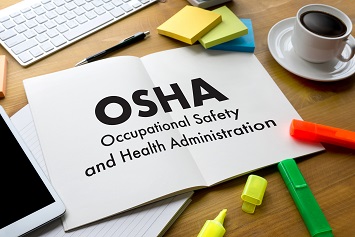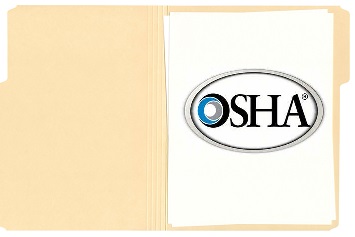The Department of Labor’s Spring 2018 Regulatory Agenda includes 20 OSHA entries: 4 in the final rule stage, 7 in the proposed rule stage, and 9 in the prerule stage.
Actions with significant implications for employers include the Standards Improvement Project IV (final rule stage); a deregulatory action under the Occupational Exposure to Beryllium standard (proposed rule stage); many revisions to the Cranes and Derricks in Construction standard (proposed rule stage): and revisions to the Emergency Response and Preparedness regulations (prerule stage).
Following is additional information on these and several other entries on OSHA’s Agenda.
Final Rule Stage
- Standards Improvement Project IV—final rule expected July 2018. This project is intended to remove or revise duplicative, unnecessary, and inconsistent safety and health standards. The revisions will address OSHA’s recordkeeping, general industry, maritime, and construction standards, with most of the revisions to the construction standards.
- Respiratory Protection—final rule expected September 2018. Any person may submit to OSHA an application for approval of a new fit-test protocol; if the application meets certain criteria, OSHA will initiate a rulemaking proceeding to determine whether to list the new protocol as an approved fit-test protocol in appendix A of the standard. OSHA received a submission to consider three new quantitative fit-test protocols that reduce the time required to complete the fit test while maintaining acceptable test sensitivity, specificity, and predictive value. This rulemaking evaluates the efficacy of the submitted fit-test protocols and, if appropriate, will adopt them in appendix A.
Proposed Rule Stage
- Occupational Exposure to Beryllium. OSHA says it has been negotiating with industry over the general industry standard and may propose revisions by December 2018.
- Cranes and Derricks in Construction—proposal expected December 2018. Proposed amendments to OSHA’s 2010 standards include correcting references to power line voltage for direct current (DC) voltages as well as alternating current (AC) voltages; broadening the exclusion for forklifts carrying loads under the forks from “winch or hook” to a “winch and boom”; clarifying an exclusion for work activities by articulating cranes; clarifying the use of demarcated boundaries for work near power lines; and correcting an error permitting body belts to be used as a personal fall arrest system rather than a personal fall restraint system.
- Crane Operator Qualification in Construction—proposal expected May 2018. This rulemaking seeks to identify criteria for employers to follow to ensure their crane operators are completely qualified to operate cranes safely on construction worksites.
- Hazard Communication Standard (HCS)—proposal expected February 2019. OSHA and other U.S. agencies have been involved in a long-term project to negotiate a globally harmonized approach to classifying chemical hazards and providing labels and safety data sheets (SDSs) for hazardous chemicals. The result is the Globally Harmonized System of Classification and Labelling of Chemicals (GHS). OSHA incorporated the GHS into its HCS in March 2012 to specify requirements for hazard classification and to standardize label components and information on SDSs. However, the GHS has been updated several times since OSHA’s rulemaking. OSHA wants to harmonize the HCS to the latest edition of the GHS and codify a number of enforcement policies that have been issued since the 2012 standard.
- Tracking of Workplace Injuries and Illnesses—proposal expected July 2018. OSHA is seeking to amend its recordkeeping regulation to remove the requirement to electronically submit to OSHA information from the OSHA Form 300 (Log of Work-Related Injuries and Illnesses) and OSHA Form 301 (Injury and Illness Incident Report) for establishments with 250 or more employees, which are required to routinely keep injury and illness records. Under the proposed rule, these establishments would be required to electronically submit only information from the OSHA Form 300A (Summary of Work-Related Injuries and Illnesses).
Prerule Stage
- Communication Tower Safety. Communication tower construction and maintenance activities are not adequately covered by current OSHA fall protection and personnel hoisting standards. OSHA plans to use information it will collect from a Small Business Regulatory Enforcement Fairness Act (SBREFA) panel to identify effective work practices and advances in engineering technology that would best address industry safety and health concerns.
- Emergency Response and Preparedness. Some OSHA standards governing emergency response and preparedness were promulgated decades ago, and none were designed as comprehensive emergency response standards. OSHA is considering updating these standards with information gathered through a Request for Information (RFI) and public meetings.
- Lockout/Tagout. Recent technological advancements that employ computer-based controls of hazardous energy (e.g., mechanical, electrical, pneumatic, chemical, and radiation) conflict with OSHA’s existing lockout/tagout standard. The agency has recently seen an increase in requests for variances for these devices. An RFI is planned to help understand the strengths and limitations of this new technology as well as potential hazards to workers.
- Prevention of Workplace Violence in Health Care and Social Assistance. A December 2016 RFI solicited information primarily from healthcare employers, workers, and other subject matter experts on the impacts of violence, prevention strategies, and other information that will be useful to the Agency. On January 10, 2017, OSHA granted petitions from a broad coalition of labor unions and National Nurses United asking for a standard on preventing workplace violence in healthcare.
- Blood Lead Level for Medical Removal. OSHA is exploring regulatory options to lower blood lead levels in affected workers. An advanced notice of proposed rulemaking would seek input from the public to help the agency identify possible areas of the lead standards for revision to improve protection of workers in industries and occupations where preventable exposure to lead continues to occur.


